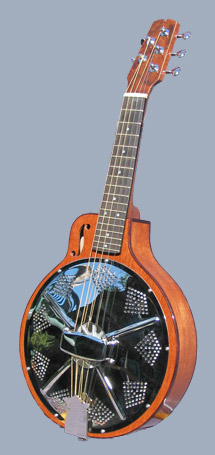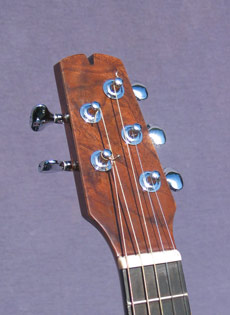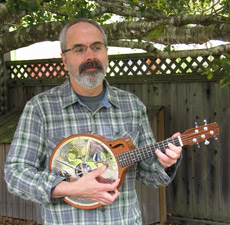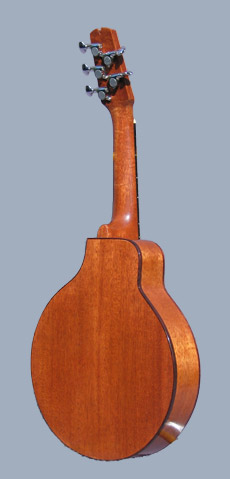Gallery of Mandonator™ Instruments

= Mandonator™ Serial #2 ===
I built this instrument as a prototype, but I played it steadily for three years. In February 2012, I sold it to virtuoso mandolinist John Reischman. It has 5 strings, tuned EADGC (high to low), making it both a resonator mandolin and mandola.
Optional features are:
- Five strings with 14.295" scale
- Mahogany back and sides with camatillo rosewood binding
- Mahogany neck
- Ebony fingerboard
- Snakehead shape, walnut veneer headstock
- White mother-of-pearl fingerboard inlays
- Nickel plated hardware
- Gotoh 510 Mini tuners
- Stamped Gibson-style tailpiece
- Radiused fingerboard
Standard features include:
- Spherically arched back
- Spider bridge and resonator cone
- Cutaway
- Traditional F-shaped soundhole
- Maple saddle
- Bone nut

Walnut burl headstock veneer sandwiched over holly. I hadn't yet designed my 'TG' headstock inlay, or I would have included it.

After a year of owning Mandonator #2, John Reischman commented, “... it is a great instrument and I am glad to own it.”

The body and neck is of mahogony with camatillo rosewood binding